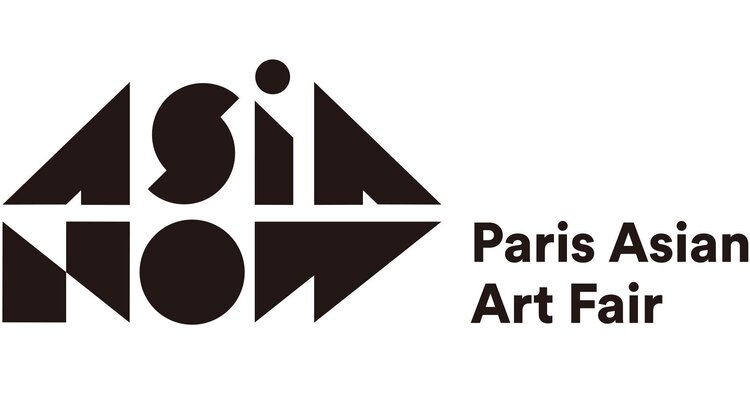Wagiwagi | SUAVEART
Bagus Pandega & Kei Imazu, The Fertile Land, 160 x 300 cm, Fabric collage and acrylic on canvas, 2022, courtesy SUAVEART
Wagiwagi is an ongoing art-driven urban program; it is simultaneously an arts collective, a ‘Terracotta Embassy’ in Indonesia, as well as a platform and incubator for innovative ideas. Wagiwagi was founded by SUAVEART, Taiwan, curated by Yipei Lee and participated in documenta 15, Kassel.
In Austronesian Siraya and Atayal languages ‘Wagiwagi’ is reinterpreted as Greeting to Nature, and at the core of Wagiwagi is a conceptual philosophy of contemporary society and an ambition to accelerate trans-regional knowledge about the interpretation of future life. Seven artworks are represented by artists Aliansyah Caniago, Bagus Pandega & Kei Imazu, Celyn Bricker, Anchi Lin [Ciwas Tahos], TFRI Shu-Hui Wu & Tzu-Fen Lin, Hsin-Chieh Hung, and Chuan-Lun Wu in Asia NOW.
Presentation of Wagiwagi:
Wagiwagi brings together artists, scientists and citizens from around the world; together, the collective responds to environmental issues that are not only human centric but also explores non-human perspectives and cultural exchanges in hypertext society. Conceptualizing Wagiwagi art labs is the idea that culture can be a primary driver for sustainable living, and that we need to reflect this on fact if we are to live together successfully in future.
Wagiwagi is the philosophy of contemporary society, which is concerning the interpretation of future life and attempting to explore the ecosystem from a non-human-centered perspective. We are reconstructing and rethinking about the dialectical methodologies of the system “resource-commoner-institution”, including the collaboration and creation of scientists, artists and citizens responding to our environmental issues from the angles of sunlight, plants and land, as well as the basic system design in the architectural space which will transform into the conceptualization of art labs.
In the geographical Austronesian Siraya and Atayal languages, “Wagi” represents the sun; Wagiwagi means Greeting to nature, and also What a great idea! The Chinese translation “瓦 Wa” represents the tile, which carries the media of the boundary between nature and human; the former “集 Gi” means collective and collaborative; the latter “籍 Gi” echoes the identity and belonging of all things.
Therefore, starting from the collaboration between SUAVEART and Jatiwangi art Factory, the collaborative implementation may be an alternative field created in the process of identification, exploration, establishment, resistance, running-in and negotiation, pointing to a certain life practice of “living together” in stages also includes reflection on various reasons for culture as the driver for sustainable living.
Bagus Pandega & Kei Imazu:
Palm oil is literally everywhere – in our foods, cosmetics, cleaning products and fuels. It’s a source of huge profits for multinational corporations, while at the same time destroying the livelihoods of smallholders. Displacement of indigenous peoples, deforestation and loss of biodiversity are all consequences of our palm oil consumption.
Palm oil is cheap, abundant and probably the most versatile crop produced by large-scale farming. Similar to the way crude oil is processed into different fuels, plastics and petrochemicals, palm oil is also refined, distilled, filtered and blended to create an array of solid and liquid products that make your soap foam, fix the color in your lipstick, crisp up your donut, soften your bread and make your chocolate smooth and shiny. You can spread it on toast, light it as a candle, wash your clothes with it or run your car on it.
But palm oil contributes to global warming as forests are cleared to make way for oil palm plantations. As their forest habitat is cleared, endangered species such as the orangutan, Borneo elephant and Sumatran tiger are being pushed closer to extinction. Further growth in demand could lead to more forest loss and in turn more greenhouse gas emissions. Tropical deforestation, forest fires, and peatland degradation in Indonesia are a major cause of greenhouse gas emissions and biodiversity loss. Oil palm (Elaeis guineensis) is one of the more visible and profitable agricultural commodities driving the expansion of industrial and small-scale plantations into forest and peatland areas. Although they are not the primary driver of deforestation, oil palm plantations are the last and most profitable phase of a land governance system that incentivises the degradation and eventual conversion of natural forests, beginning with forestry concessions.
The early history of oil palm in Indonesia was as a plantation crop under the Dutch colonial administration. The first oil palm tree (Emma) was planted in the Bogor Botanical Gardens in Java in 1848, and a demonstration plantation was later established in Java. In 1875, seedlings were transferred from Java to Sumatra. These seedlings would become the foundation stock for future plantations in Indonesia and more broadly in Southeast Asia. Aided by scientific research and access to modern technologies including mills, plantations in Sumatra became significantly more productive than plantations in Africa.
This work contains collage of images related to the palm oil plantation history in Indonesia. Collected image archives from the Leiden University and also from the Rijksmuseum digital collection. Images of how the plantation begun and developed during the colonial era. How colonial history in Indonesia plays roll and contributes to the current issue in global warming. These historical archived images mixed with current news head titles related to the global use of palm oil, the government policies, and the rainforests global warming issues. 0% deforestation will not happen in the near future.
Presented by SUAVEART and supported by Novus Art

